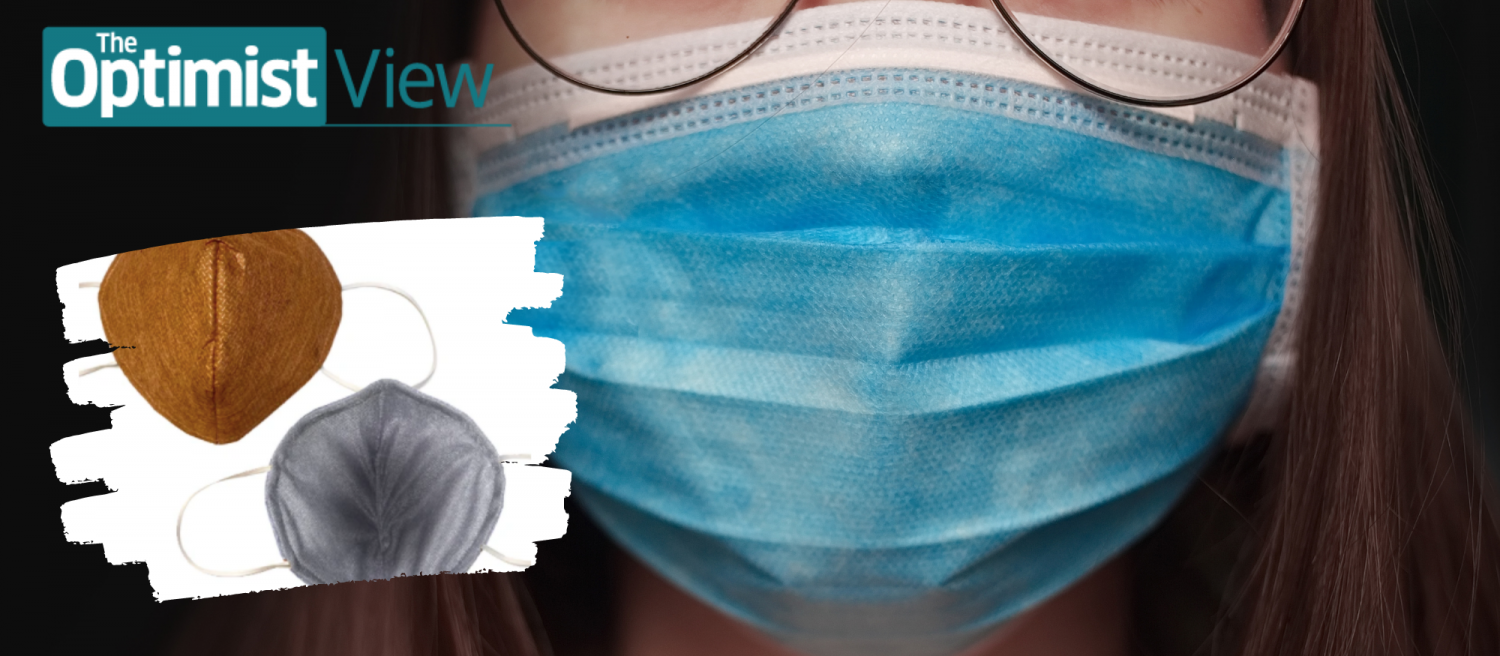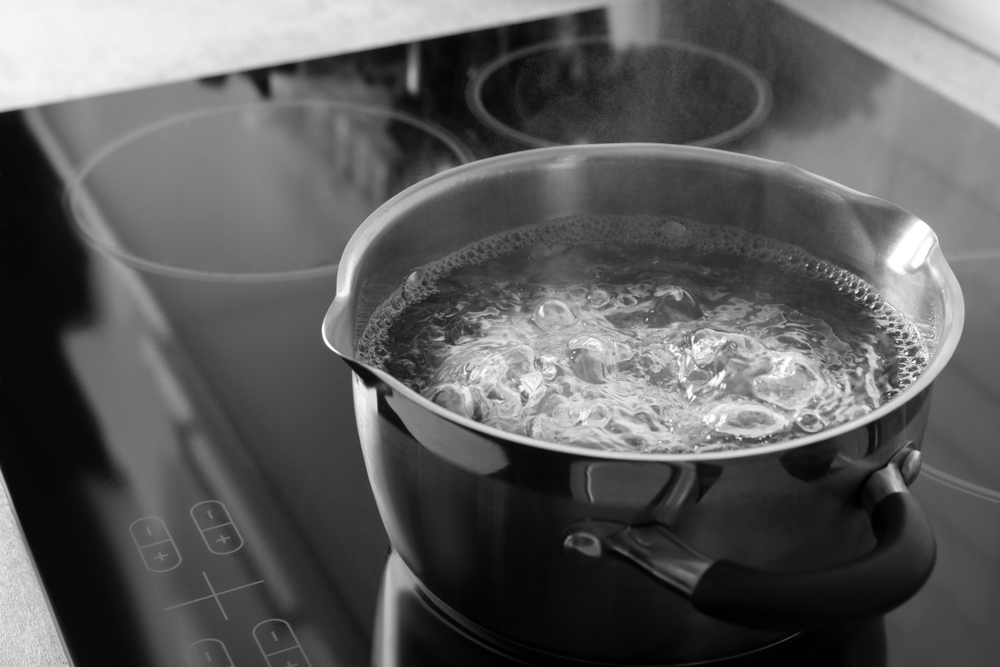Was I deceived, or did a sable cloud
Turn forth her silver lining on the night?
– John Milton
By JURRIAAN KAMP
Ancient knowledge can make a major contribution to the fight against the coronavirus. Recently, the New England Journal of Medicine published a study that found that the virus lasted only briefly on copper, compared with days on stainless steel and plastic. The outcome should not have come as a surprise. Humans have used heavy metals—like gold, silver and copper—for ages to protect themselves against microbes and pathogens. While scientists race to develop drugs and vaccines against Covid19, masks made from copper or silver mesh may provide superior face wear protection in the meantime.
Healing Wisdom from the Ages
In the oldest known medical document in history, the Smith’s Papyrus dated around 1600 B.C., an Egyptian healer refers to the use of copper to cure infections. Around the same time, in China, copper was used to treat heart and stomach pain as well as bladder diseases. The Phoenicians treated the wounds of their warriors inserting shavings from their bronze—an alloy of copper and zinc—swords. Ship captains tossed silver coins into water barrels on board their ships to keep drinking water fresh. And women have known for centuries that their children would suffer less from diarrhea when they frequently drank from copper bowls.
In the middle of the 19th century, French physician Victor Burq noticed that the 200 laborers of a copper smelter in Paris were spared from cholera outbreaks in the city in 1832, 1849 and 1852. He suspected that something about their profession (copper perhaps?) had made them immune to the highly infectious disease. He started an investigation and found that during the next cholera epidemic in Paris in 1854/55, there were no deaths of people working with copper on a daily basis, from jewelers to goldsmiths and instrument makers. Burq discovered that musicians who played brass instruments were protected as well. Subsequently, during the 1865 cholera outbreak in Paris more than 6,000 people died out of a population of almost 1.7 million, about 0.35 percent. At the same time, of the 30,000 people working in copper-related industries in the French capital only 0.15 percent died of cholera.
After collecting more reports about copper industries in other European countries, Burq presented his findings in 1867 to the Académie des sciences and argued that copper was an “effective means of prevention which should not be neglected”. His contemporaries coined the term burquism for the form of metallotherapy, the ingestion of copper, that Burq developed to combat cholera. However, more than a century later ‘burquism’ is an obsolete term and the healing powers of copper have been forgotten.

Metallics for the Modern Age
“This is the arrogance of the human race: the love of plastic and antibiotics replaced 4,000-year old wisdom”, says Michael Schmidt, a professor of microbiology and immunology at the Medical University of South Carolina in the United States and a renowned copper expert.
Metals provide lasting protection against microbes and pathogens. When scientists recently tested the antimicrobial effect of the copper railings at the century-old Grand Central Station in New York City, they found that the copper was working on microbes in the same way as new copper surfaces. Schmidt describes copper’s ability to fight viruses as a “grenade”. The metal easily reacts with oxygen. That is why copper objects and surfaces turn green. That environment is actively oxidizing which makes it a really hostile place for bacteria. When a microbe comes into contact with a copper surface, it causes it to, in Schmidt’s words, “literally explode”.
Copper releases ions with a positive potential—free radicals—that attract negatively charged electrons from a microbe. Once the electron interacts with the metal, it is swept away in an electrical current, much like a person falling into a fast-flowing river. The electron can never leap back into the microbe simply because it is now in a different ‘downstream’ location. The microbe remains ‘mutilated’; its DNA and RNA are destroyed. That also means that the microbe or virus does not get an opportunity to mutate and become resistant to copper. In other words: the infection protection from copper does not face the limitations of antibiotics. Other precious metals, like titanium and silver, also offer positively charged ions that act as ‘huggers’, stealing electrons from pathogens.
Many buildings feature stainless steel because its shining effect gives an impression of cleanliness. The steel is preferred above copper because copper needs to be polished to give the same clean impression. But these impressions deceive. Despite their shine, steel surfaces, railings and doorknobs that are frequently used need to be regularly cleaned with antibacterial substances to remain truly clean and safe; copper, on the other hand, disinfects by merely being there and is continuously working 24/7.
As reported in Smithsonian Magazine, scientists have tested the effect of copper on the antibiotic-resistant Staphylococcus aureus (MRSA), on virulent strains of E.coli, on the bacteria that causes Legionnaire’s disease and on viruses that have created health crises in the past like the Middle East Respiratory Syndrome (Mers), the Swine Flu pandemic of 2009, and the coronavirus 229E which is a relative of Covid19. In all these cases, contact with copper killed the pathogen within minutes. Many studies have been done about the disinfectant powers of copper and the metal has been registered by the U.S. Environmental Protection Agency (EPA) as the first solid antimicrobial material.
Hospitals can benefit greatly from copper’s powers. According to the World Health Organization (WHO) 7 percent of hospitalized patients will acquire at least one health care-associated infection. A 2002 study concluded that such ‘hospital-caused’ infections accounted for an estimated 1.7 million infections and almost 99,000 associated deaths each year in the United States. Research by the Centers for Disease Control (CDC) from 10 years ago puts the cost of these infections between $35 and $45 billion annually.
A major part of these infections is caused by inadequate environmental hygienic conditions and poor infrastructure. That is where copper can help. Professor Schmidt did a study installing copper alloys on surfaces including bedside railings, tray tables, IV stands and chair arm rests at three hospitals in the United States. The 43-month investigation showed a 58 percent reduction compared to regular infection patterns in these hospitals even though the researchers had introduced copper to less than 10 percent of the surface area in the rooms. Other hospitals are experimenting with copper-infused bedding. In copper-producing countries like Peru and Chile, copper is also increasingly used in public transit systems. Atlanta airport has 50 water bottle filling stations made with copper.
Finally, the Covid19 pandemic has made high-tech companies in San Francisco’s Bay Area aware of the protective powers of precious metals. In a recent note to its staff about “safely re-opening our offices”, Salesforce writes: “We […] expect new materials, like antimicrobial metals such as copper, brass and bronze, to play a bigger role in our designs going forward.”
Installing metals as copper seems expensive but the hospital research by Schmidt shows that it is economically very efficient. It took less than two months to recoup the investment in the installation of copper components through the savings in the expenses to treat infections. And, again, copper never loses its microbial killing abilities giving the one-time investment eternal value.
Finally, the question may arise whether we have enough copper to ‘sanitize’ society. According to the Copper Alliance, global copper reserves are estimated at 830 million tons (2019) and the current annual copper demand is 28 million tons. Moreover, copper is one of the most recycled metals and it can be recycled without losing any of its properties.
 Silver already has a place in modern health care. It is used on medical devices, like catheters, to reduce the risk of infection. Silver is also put in bandages to treat burn victims and hospitals use it to fight the ‘superbugs’ that have grown resistant to antibiotics. Scientists of the University of Calgary recently screened the impact of silver on many mutant strains of the bacterium E.coli. They found that silver acts in multiple ways and ‘knocked out’ different, unique genes in each strain rendering the bacterium harmless. As phys.org reports, there is also research that shows that adding silver—or another metal—to a traditional antibiotic that does not work anymore, makes the drug effective again.
Silver already has a place in modern health care. It is used on medical devices, like catheters, to reduce the risk of infection. Silver is also put in bandages to treat burn victims and hospitals use it to fight the ‘superbugs’ that have grown resistant to antibiotics. Scientists of the University of Calgary recently screened the impact of silver on many mutant strains of the bacterium E.coli. They found that silver acts in multiple ways and ‘knocked out’ different, unique genes in each strain rendering the bacterium harmless. As phys.org reports, there is also research that shows that adding silver—or another metal—to a traditional antibiotic that does not work anymore, makes the drug effective again.
Silver’s popularity as a bacteria killer has led to the development of silver-impregnated fabrics that can be used for underwear, socks, shoe insoles and running shirts to prevent bad smells.
Entrepreneurs and Antimicrobial Fabrics
Given these examples, it makes sense that entrepreneurs are pioneering the use of copper or silver for face masks in the battle against the coronavirus. Professor Schmidt is an enthusiastic supporter of this trend. He considers copper a potential “game changer” for combating the virus. “If we begin to incorporate copper masks into our strategy, we may be able to short-circuit a second wave that is coming.”
The challenge is to produce truly effective masks. There are multiple masks on the market that are ‘metal-infused’. But disinfection only happens when a microbe hits pure copper or silver. If the metals do not meet the microbe, the mask will not confer any more benefit than regular masks. The best masks have the metals incorporated into every fiber of the mask—they should be 99.9 percent metal. Moreover, the metal masks on the market—unlike the professional N95 mask—do not create a perfect seal around the wearer’s face. And all masks that cover nose and mouth do not cover the eyes. The tear ducts are connected to the sinus pathways providing another way for the virus to enter. Schmidt refers to a recent announcement by the US Centers of Disease Control (CDC) that people wearing spectacles are at a lower risk of infection “because the lenses are shielding the tear duct”.
Despite these shortcomings, University Hospitals, as the first health care system in the United States, recently bought 25,000 copper-infused reusable masks from Cupron, a copper-based technology company that harnesses the unique properties of copper for healthcare, consumer, industrial, and military applications. Daniel Simon, president of University Hospitals said: “This copper-infused fabric has been clinically validated to reduce the spread of hospital acquired infections such as C. Diff and MRSA.” University Hospitals reserves the harder-to-obtain and more expensive N95 masks for caregivers who treat Covid19 positive patients. The copper masks are used to protect other hospital staff. Cupron sells the same masks to the general public as well.
The example of University Hospitals confirms that copper masks offer an improvement on the widely used cloth masks. Virus-laden droplets can remain active on cloth surface for several days. But, according to Schmidt, the viral particles die as they go through a copper mask into the environment, or the other way around from the environment to the wearer of the mask.
Entrepreneur Sharon Whiteley launched her company TRU47—the number 47 refers to the place of silver (Ag) in the periodic table—in 2015 to provide non-toxic, alcohol-free products made from silver to support health and well-being. “Many of the chemical and alcohol-based antimicrobial products on the market build resistance after repeated use and they dry out and crack skin leaving it vulnerable”, says Whiteley. TRU47 99.99 percent pure silver cloths can be used on surfaces as well as on the human body to protect people against germs. Studies have confirmed that the cloths are as effective after 10,000 wipes and 500 washes as on their first use. As bacteria, fungi and viruses cannot grow on silver, the cloth remains clean compared to the average kitchen sponge that hosts on average 2.7 million germs per square inch.
When the corona crisis hit, Whiteley quickly realized that her silver cloth would provide a superior face mask as well. Today, TRU47 offers some ten different types of silver and a combination of silver and copper masks. The masks are ionically plated 99.9 percent silver or copper mesh material. Pure silver or copper masks are reusable and can be worn for years and maintain their efficacy. Washing is not necessary. “That is a personal preference”, says Whiteley. An additional advantage of the mesh masks is that they are highly breathable compared to woven cloth masks.
In fact, breathing activates the efficacy of the silver and copper masks. Breath is moist and that moisture reacts with the copper or silver. “The water vapor serves”, says Schmidt, “as the unpulled pin grenade.” When the vapor interacts with the metal the pin is pulled, and the mask user is creating a ‘free radicals zone’ in front of their face that disinfects the air in real time. Whereas regular masks merely filter the air and keep the microbes alive, metal masks destroy harmful pathogens on contact.
That is why precious metals are such an important ally in the battle against the coronavirus as well as other viral and microbial threats. As Schmidt argues the more copper would be in place in hospitals and public spaces like airports, buses, subways and gyms, the more the transmission of infection would be impacted. “Bacteria and viruses are the ones causing the infection”, he says, “if their numbers go down, common sense would tell you that you should have fewer infections.”
Vaccines can help to overcome the Covid19 crisis. However, as viruses and bacteria keep mutating, they need to be updated again and again reducing their efficacy. Precious metals have been around since the beginning of time. They have played their effective protective role in human civilizations for thousands of years. It is a powerful natural solution that is as available as ever.












